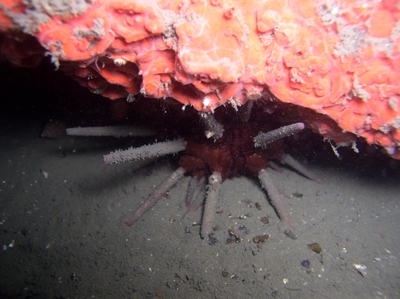General Description
The dark brown, blunt-ended spines have a granular appearance and older, larger specimens may become encrusted with marine life. The test is usually pale cream or greenish in colour and the very large tubercles, of which there are comparatively few, are perforate. Test diameter up to 8 cm.
Biology
This is a common, very robust, slow moving species. A similar species Phyllacanthus irregularis grows much larger and is found in South and Western Australia.
Habitat
Subtidal areas or at very low spring tides wedged between rocks, to depth of 91 m.
Reefs
Coastal shores
Distribution guide
Eastern Australia.
Species Group
Depth
Shore (0-1 m)
Shallow (1-30 m)
Deep ( > 30 m)
Water Column
Max Size
8 cm
Diet
Omnivore
Harmful
Spines can puncture skin. Venom status unknown.
Commercial Species
No
Global Dispersal
Recorded in Australia
Species Code
MoV 4000
Identify
Conservation Status
- DSE Advisory List : Not listed
- EPBC Act 1999 : Not listed
- IUCN Red List : Not listed





